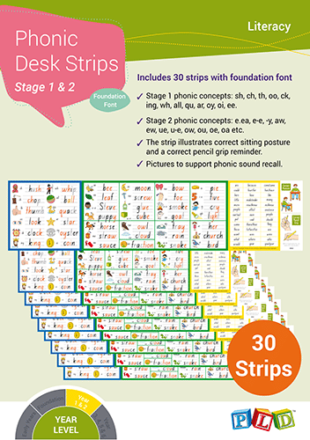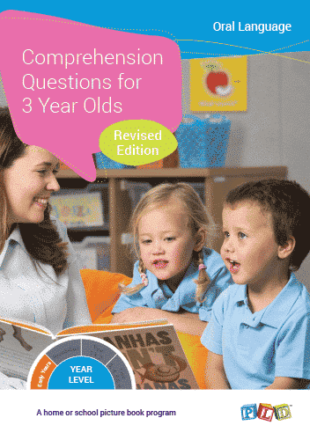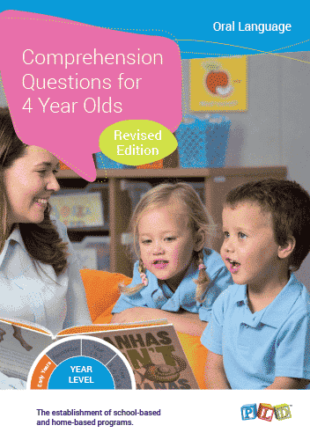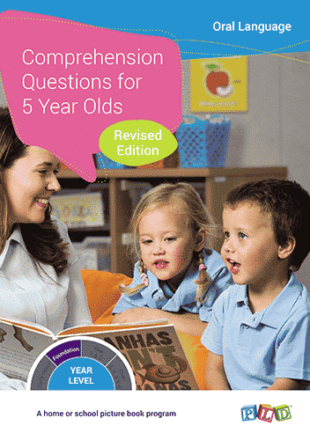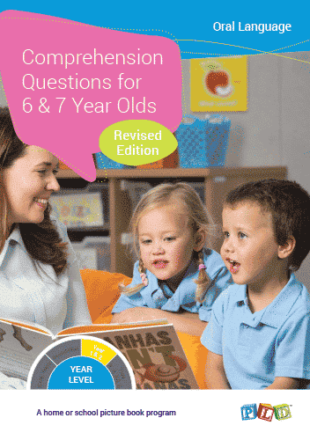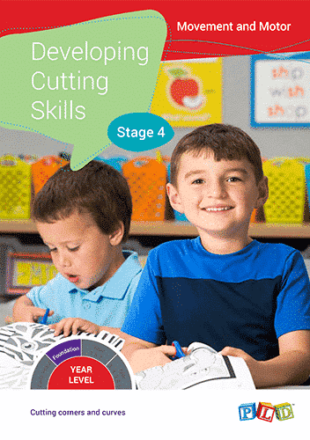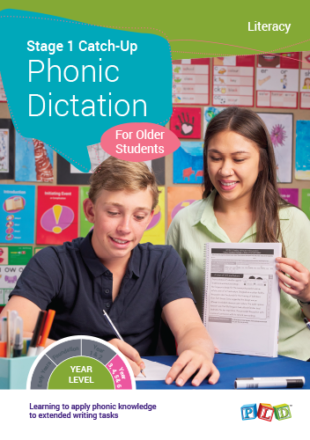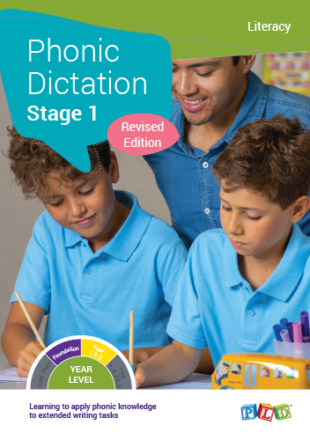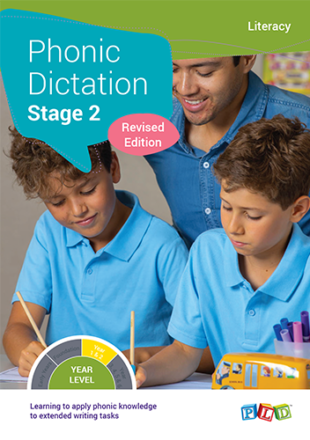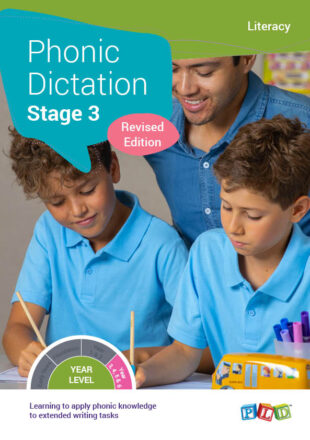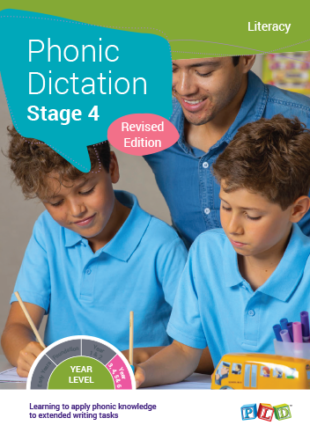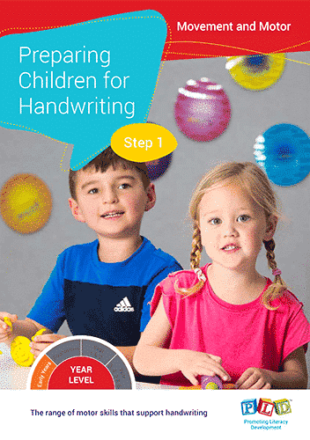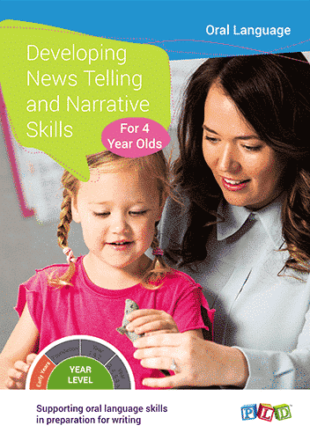Age
Showing 401–416 of 458 results
-
Phonic Desk Strips – Stage 1, 2 & 3
The desk strips are attractive resources for use in the school or home to assist children during early spelling and writing efforts providing: Stage 1 phonic concepts: e.g. sh, ch, th, oo, ck, ing, wh, all, qu, ar, oy, oi, ee Stage 2 phonic concepts: e.g. e.ea, e-e, -y, aw, ew, ue, u-e, ow, ou, or, oa etc. Stage 3 phonic concepts: e.g. tch, dge, ti, oor, ore, ear, mb, ey, le, or (schwa) etc. Pictures to support alphabet sound recall Includes: Physical: Desk Strips (Pack of 30 strips) Other Desk Strips and Mats available: Alphabet Desk Mats for The Early Years (Foundation Font) Alphabet Desk Mats for The Early Years (Cursive Font) Alphabet Desk Strips in Cursive Font Alphabet Desk Strips in Foundation Font Phonic Desk Strip – Stage 1 Foundation Phonic Desk Strip – Stage 1 Cursive Font Phonic Desk Strip – Stage 2
$30.00$30.00 incl. GST[flipbook-popup id=''][/flipbook-popup] -
Phonic Desk Strips – Stage 2
The desk strips are attractive resources for use in the school or home to assist children during early spelling and writing efforts providing: Stage 2 phonic concepts: e.g. sh, ch, th, oo, ck, ing, wh, all, qu, ar, oy, oi, ee, ea, e-e and many more … The strip illustrates correct sitting posture and a correct pencil grip reminder Pictures to support alphabet sound recall Includes: Physical: Desk Strips (Pack of 30 strips) Other Desk Strips and Mats available: Alphabet Desk Mats for The Early Years (Foundation Font) Alphabet Desk Mats for The Early Years (Cursive Font) Alphabet Desk Strips in Cursive Font Alphabet Desk Strips in Foundation Font Phonic Desk Strip – Stage 1 Foundation Phonic Desk Strip – Stage 1 Cursive Font Phonic Desk Strip – Stage 2 Phonic Desk Strip – Stage 1, 2 & 3
$30.00$30.00 incl. GST[flipbook-popup id=''][/flipbook-popup] -
Comprehension Questions for 3 Year Olds
A home or school picture book program for 3 year olds.
Comprehension Questions for 3 Year Olds is a home or school resource designed to support oral language development in young children. By age 3, children should be verbal, actively engage in social interactions and understand simple, literal questions about their surroundings. This program, developed by speech pathologists, supports the development of these foundational comprehension skills using engaging picture books to ask age-appropriate questions and assess oral responses. Oral language skills are critical for social interaction and academic success. Program Includes: Picture Book Recommendations: List of developmentally appropriate Picture Book recommendations, such as 'Spot Can Count', 'The Very Hungry Caterpillar' and 'We're Going on a Bear Hunt'. 35 Question Cards for Repeated Reading Sessions: Develop blending skills through engaging visuals. Each card contains sample questions (over four days) and model answers based on each recommended picture book. Questions focus on Blank Level 1 and 2 skills, such as 'What is it?' or 'What colour is it?' Instruction Booklet: Guidance for presenting in group, class or home settings. Strategies for Success: Techniques for responding to inadequate answers. Progress Check: Two assessments to monitor comprehension skill development. Other Programs within the Range: Comprehension Questions for 3 Year Old (Mc3) Parent Training Video: 3 Year Olds Comprehension Questions for 4 Year Old (Mc4) Parent Training Video: 4 Year Olds Comprehension Questions for 5 Year Old (Mc5) Parent Training Video: 5 Year Olds Comprehension Questions for 6 and 7 Year Old (Mc6) Parent Training Video: 6 and 7 Year Olds Comprehension Questions for 8 and 9 Year Old (Mc8) Parent Training Video: 8 and 9 Year Olds The full set of Comprehension Questions Range (Mc3/4/5/6/8) Links to the Teaching Sequence Manuals: This product can be used to support the implementation of the Early Years Teaching Sequence Manual on Page 5
$82.50$82.50 incl. GST[flipbook-popup id=''][/flipbook-popup] -
Comprehension Questions for 4 Year Olds
A home or school picture book program for 4 Year Old students.
Comprehension Questions for 4 Year Olds is a home or school resource designed to support oral language development in young children. From a young age, children should be verbal, actively engage in social interactions and understand simple, literal questions about their surroundings. By age 4, children begin answering more complex questions, requiring them to identify less obvious attributes, make predictions and sequence information. This program, developed by speech pathologists, supports the development of these foundational comprehension skills using engaging picture books to ask age-appropriate questions and assess oral responses. Oral language skills are critical for social interaction and academic success. Program Includes: Picture Book Recommendations: List of developmentally appropriate Picture Book recommendations, such as 'Piranhas Don't Eat Bananas' and 'We're Going on a Bear Hunt'. 41 Question Cards for Repeated Reading Sessions: Develop blending skills through engaging visuals. Each card contains sample questions (over four days) and model answers based on each recommended picture book. Questions focus on Blank Level 2 and 3 skills, such as 'What is this part used for?' or 'How did you feel?' Instruction Booklet: Guidance for presenting in group, class or home settings. Strategies for Success: Techniques for responding to inadequate answers. Progress Check: Two assessments to monitor comprehension skill development. Other Programs within the Range: Comprehension Questions for 3 Year Old (Mc3) Parent Training Video: 3 Year Olds Comprehension Questions for 4 Year Old (Mc4) Parent Training Video: 4 Year Olds Comprehension Questions for 5 Year Old (Mc5) Parent Training Video: 5 Year Olds Comprehension Questions for 6 and 7 Year Old (Mc6) Parent Training Video: 6 and 7 Year Olds Comprehension Questions for 8 and 9 Year Old (Mc8) Parent Training Video: 8 and 9 Year Olds The full set of Comprehension Questions Range (Mc3/4/5/6/8) Links to the Teaching Sequence Manuals: This product can be used to support the implementation of the Early Years Teaching Sequence Manual on Page 5
$82.50$82.50 incl. GST[flipbook-popup id=''][/flipbook-popup] -
Comprehension Questions for 5 Year Olds
Picture Book Program for 5 Year Olds: Perfect for Home or School
Comprehension Questions for 5 Year Olds is a home or school resource designed to support oral language development in young children. From a young age, children should be verbal, actively engage in social interactions and understand simple, literal questions about their surroundings. By age 5, children begin answering more complex questions that involve predicting, explaining outcomes and considering alternative possibilities. This program, developed by speech pathologists, supports the development of these foundational comprehension skills using engaging picture books to ask age-appropriate questions and assess oral responses. Oral language skills are critical for social interaction and academic success. Program Includes: Picture Book Recommendations: List of developmentally appropriate Picture Book recommendations, such as 'A Lion in the Night', 'The Gruffalo' and 'The Very Hungry Caterpillar'. 42 Question Cards for Repeated Reading Sessions: Each card contains sample questions (over four days) and model answers based on each recommended picture book. Questions focus on Blank Level 3 and 4 skills, such as 'Why did that happen?', 'What would you use?' or 'Why can't we?' Instruction Booklet: Guidance for presenting in group, class or home settings. Strategies for Success: Techniques for responding to inadequate answers. Progress Check: Two assessments to monitor comprehension skill development. Other Programs within the Range: Comprehension Questions for 3 Year Old (Mc3) Parent Training Video: 3 Year Olds Comprehension Questions for 4 Year Old (Mc4) Parent Training Video: 4 Year Olds Comprehension Questions for 5 Year Old (Mc5) Parent Training Video: 5 Year Olds Comprehension Questions for 6 and 7 Year Old (Mc6) Parent Training Video: 6 and 7 Year Olds Comprehension Questions for 8 and 9 Year Old (Mc8) Parent Training Video: 8 and 9 Year Olds The full set of Comprehension Questions Range (Mc3/4/5/6/8) Links to the Teaching Sequence Manuals: This product can be used to support the implementation of the Foundation Teaching Sequence Manual on Page 14
$82.50$82.50 incl. GST[flipbook-popup id=''][/flipbook-popup] -
Comprehension Questions for 6 and 7 Year Olds
Picture Book Program for 6 & 7 Year Olds: Perfect for Home or School
Comprehension Questions for 6 and 7 Year Olds is a home or school resource designed to support oral language development in young children. From a young age, children should be verbal, actively engage in social interactions and understand simple, literal questions about their surroundings. By age 6 and 7, children begin answering more complex questions requiring prediction, interpretation and evaluation. This program, developed by speech pathologists, supports the development of these foundational comprehension skills using engaging picture books to ask age-appropriate questions and assess oral responses. Oral language skills are critical for social interaction and academic success. Program Includes: Picture Book Recommendations: List of developmentally appropriate Picture Book recommendations, such as 'Arthur', 'The Rainbow Fish' and 'Possum Magic'. 40 Question Cards for Repeated Reading Sessions: Develop blending skills through engaging visuals. Each card contains sample questions (over four days) and model answers based on each recommended picture book. Questions are focused on encouraging students to predict, to interpret and to evaluate, such as 'What would happen if…?', 'How can we tell…?' or 'Which part of the story…?' Instruction Booklet: Guidance for presenting in group, class or home settings. Strategies for Success: Techniques for responding to inadequate answers. Progress Check: Two assessments to monitor comprehension skill development. Other Programs within the Range: Comprehension Questions for 3 Year Old (Mc3) Parent Training Video: 3 Year Olds Comprehension Questions for 4 Year Old (Mc4) Parent Training Video: 4 Year Olds Comprehension Questions for 5 Year Old (Mc5) Parent Training Video: 5 Year Olds Comprehension Questions for 6 and 7 Year Old (Mc6) Parent Training Video: 6 and 7 Year Olds Comprehension Questions for 8 and 9 Year Old (Mc8) Parent Training Video: 8 and 9 Year Olds The full set of Comprehension Questions Range (Mc3/4/5/6/8) Links to the Teaching Sequence Manuals: This product can be used to support the implementation of the Year 1 and 2 Teaching Sequence Manual on Page 27
$82.50$82.50 incl. GST[flipbook-popup id=''][/flipbook-popup] -
Comprehension Questions for 8 and 9 Year Olds
Picture Book Program for 8 & 9 Year Olds: Perfect for Home or School
Comprehension Questions for 8 & 9 Year Olds is a home or school resource designed to support oral language development in young children. From a young age, children should be verbal, actively engage in social interactions and understand simple, literal questions about their surroundings. By age 8 and 9, children further develop their focus on answering complex questions requiring prediction, interpretation and evaluation. This program, developed by speech pathologists, supports the development of these foundational comprehension skills using engaging picture books to ask age-appropriate questions and assess oral responses. Oral language skills are critical for social interaction and academic success. Program Includes: Picture Book Recommendations: List of developmentally appropriate Picture Book recommendations, such as 'The Gruffalo', 'The Giving Tree' and 'Diary of a Womat'. 33 Question Cards for Repeated Reading Sessions: Each card contains sample questions (over four days) and model answers based on each recommended picture book. Questions are focused on encouraging students to predict, to interpret and to evaluate, such as 'Why do you think…?' 'How do you think the girl would feel?' or 'Why do you like that one best?' Instruction Booklet: Guidance for presenting in group, class or home settings. Strategies for Success: Techniques for responding to inadequate answers. Progress Check: Two assessments to monitor comprehension skill development. Other Programs within the Range: Comprehension Questions for 3 Year Old (Mc3) Parent Training Video: 3 Year Olds Comprehension Questions for 4 Year Old (Mc4) Parent Training Video: 4 Year Olds Comprehension Questions for 5 Year Old (Mc5) Parent Training Video: 5 Year Olds Comprehension Questions for 6 and 7 Year Old (Mc6) Parent Training Video: 6 and 7 Year Olds Comprehension Questions for 8 and 9 Year Old (Mc8) Parent Training Video: 8 and 9 Year Olds The full set of Comprehension Questions Range (Mc3/4/5/6/8) Links to the Teaching Sequence Manuals: This product can be used to support the implementation of the Year 3, 4, 5 & 6 Teaching Sequence Manual on Page 30
$82.50$82.50 incl. GST[flipbook-popup id=''][/flipbook-popup] -
Developing Cutting Skills – Stage 4
Cutting tasks with corners and curves.
Developing Cutting Skills – Stage 4 is one of a series of two books created by occupational therapists and teachers to support the development of cutting skills in children between the ages of 3 and 6 at school or home. The activities target specific skills that will enable children to develop the coordination and motor skills required for cutting. Multiple opportunities to rehearse cutting skills are provided through simple, easy-to-use worksheets with clear instructions. The series outlines developmental milestones that can be useful for planning, assessment and creating individual education plans. Developing cutting skills is part of a holistic approach to promoting a comprehensive foundation for academic success. From holding scissors to snipping and cutting along a line, this book features: Simple and easy to use, the resource targets scissor skills in early childhood and developmental manner Provides multiple opportunities to rehearse cutting skills Developmental milestone norms throughout the manual This product is mentioned in the Foundation Teaching Sequence Manual on page 14. There are two resources in this series: Developing Cutting Skills – Step 1, 2 & 3 Developing Cutting Skills – Stage 4
$82.50$82.50 incl. GST[flipbook-popup id=''][/flipbook-popup] -
Stage 1 Catch Up Phonic Dictation (For Older Students)
Learning to apply phonic knowledge to extended writing tasks
Phonic Dictation: Stage 1 Catch-Up for older students supports students to bridge the gap between correctly spelling test words and applying their skills to extended writing. By completing regular dictation tasks, students rehearse and reinforce their phonics and spelling knowledge in increasingly complex contexts, improving their ability to transfer skills to self-generated writing. Dictation sessions are quick to prepare yet deliver significant benefits across key literacy areas, including: Listening and auditory memory Handwriting and language development Spelling application Program Includes: A4, spiral-bound book. Age-appropriate passages for older students operating at a Junior Primary level. Three levels of phonic passages: full-length passage format, ideal for Tier 1 students, and two shortened versions with reduced word counts for students requiring modifications. Alphabet VC and CVC words. Phonic concepts: /sh/ /ch/ /th/ /oo/ /ee/ /ck/ to CVC words. Consonant blends: CCVC and CVCC words. Phonic concepts: /ar/ /or/ /ay/ /ai/ /oy/ /oi/ /er/ /ing/ Additional passages covering concepts such as, prefixes, suffixes, high frequency words and homophones have been included in the APPENDIX section of the program. Other Programs within the Range: First Writing Activities (Foundation) Phonic Diction: Stage 1 Phonic Diction: Stage 2 Phonic Diction: Stage 3 Phonic Diction: Stage 4 Phonic Diction: Stage 5 Phonic Diction: Stage 6 Phonic Diction: Junior & Middle Primary Set (Stage 1, 2, 3, 4) Full Set of Phonic Diction Books (Discounted Bundle) Phonic Diction: Stage 1 Catch-Up (For Older Students) Phonic Diction: Stage 2 Catch-Up (For Older Students) Bulk Order Discounts 5-9 copies: 10% off 10+ copies: 15% off Links to the Teaching Sequence Manuals: This product can be used to support the implementation of the Year 1 and 2 Teaching Sequence Manual
$82.50$82.50 incl. GST[flipbook-popup id=''][/flipbook-popup] -
Phonic Dictation – Stage 1
Applying Phonic Knowledge to Extended Writing Tasks
Phonic Dictation: Stage 1 supports students to bridge the gap between correctly spelling test words and applying their skills to extended writing. By completing regular dictation tasks, students rehearse and reinforce their phonics and spelling knowledge in increasingly complex contexts, improving their ability to transfer skills to self-generated writing. Dictation sessions are quick to prepare yet deliver significant benefits across key literacy areas, including: Listening and auditory memory Handwriting and language development Spelling application Program Includes: A4, spiral-bound book. Three levels of phonic passages: full-length passage format, ideal for Tier 1 students, and two shortened versions with reduced word counts for students requiring modifications. Alphabet VC and CVC words. Phonic concepts: /sh/ /ch/ /th/ /oo/ /ee/ /ck/ to CVC words. Consonant blends: CCVC and CVCC words. Phonic concepts: /ar/ /or/ /ay/ /ai/ /oy/ /oi/ /er/ /ing/ Additional passages covering concepts such as, prefixes, suffixes, high frequency words and homophones have been included in the APPENDIX section of the program. Other Programs within the Range: First Writing Activities (Foundation) Phonic Diction: Stage 1 Phonic Diction: Stage 2 Phonic Diction: Stage 3 Phonic Diction: Stage 4 Phonic Diction: Stage 5 Phonic Diction: Stage 6 Phonic Diction: Junior & Middle Primary Set (Stage 1, 2, 3, 4) Full Set of Phonic Diction Books (Discounted Bundle) Phonic Diction: Stage 1 Catch-Up (For Older Students) Phonic Diction: Stage 2 Catch-Up (For Older Students) Bulk Order Discounts 5-9 copies: 10% off 10+ copies: 15% off Links to the Teaching Sequence Manuals: This product can be used to support the implementation of the Year 1 and 2 Teaching Sequence Manual
$82.50$82.50 incl. GST[flipbook-popup id=''][/flipbook-popup] -
Stage 2 Catch Up Phonic Dictation (For Older Students)
Learning to apply phonic knowledge to extended writing tasks.
Phonic Dictation: Stage 2 Catch-Up for Older Students supports students to bridge the gap between correctly spelling test words and applying their skills to extended writing. By completing regular dictation tasks, students rehearse and reinforce their phonics and spelling knowledge in increasingly complex contexts, improving their ability to transfer skills to self-generated writing. Dictation sessions are quick to prepare yet deliver significant benefits across key literacy areas, including: Listening and auditory memory Handwriting and language development Spelling application Program Includes: A4, spiral-bound book. Age-appropriate passages for older students operating at a Junior Primary level. Three levels of phonic passages: full-length passage format, ideal for Tier 1 students, and two shortened versions with reduced word counts for students requiring modifications. Phonic concepts: /sh/ /ch/ /th/ /oo/ /ee/ /ck/ /ar/ /or/ /ay/ /ai/ /oy/ /oi/ /er/ /ing/. Consonant clusters and double consonants. Long vowels: /a-e/ /e-e/ /i-e/ /o-e/ /u-e/ Phonic concepts: /oa/ and /ow/ (as oa), /ir/ (as er), /ur/ (as er), /er/ and /aw/ (as or) /or/, /ea/ (as ee) /ee/, /ou/ and /ow/ (as ou) etc. Additional passages covering concepts such as, prefixes, suffixes, high frequency words and homophones have been included in the APPENDIX section of the program. Other Programs within the Range: First Writing Activities (Foundation) Phonic Diction: Stage 1 Phonic Diction: Stage 2 Phonic Diction: Stage 3 Phonic Diction: Stage 4 Phonic Diction: Stage 5 Phonic Diction: Stage 6 Phonic Diction: Junior & Middle Primary Set (Stage 1, 2, 3, 4) Full Set of Phonic Diction Books (Discounted Bundle) Phonic Diction: Stage 1 Catch-Up (For Older Students) Phonic Diction: Stage 2 Catch-Up (For Older Students) Bulk Order Discounts 5-9 copies: 10% off 10+ copies: 15% off Links to the Teaching Sequence Manuals: This product can be used to support the implementation of the Year 3, 4, 5 and 6 Teaching Sequence Manual
$82.50$82.50 incl. GST[flipbook-popup id=''][/flipbook-popup] -
Phonic Dictation – Stage 2
Applying Phonic Knowledge to Extended Writing Tasks
Phonic Dictation: Stage 2 supports students to bridge the gap between correctly spelling test words and applying their skills to extended writing. By completing regular dictation tasks, students rehearse and reinforce their phonics and spelling knowledge in increasingly complex contexts, improving their ability to transfer skills to self-generated writing. Dictation sessions are quick to prepare yet deliver significant benefits across key literacy areas, including: Listening and auditory memory Handwriting and language development Spelling application Program Includes: A4, spiral-bound book. Three levels of phonic passages: full-length passage format, ideal for Tier 1 students, and two shortened versions with reduced word counts for students requiring modifications. Phonic concepts: /sh/ /ch/ /th/ /oo/ /ee/ /ck/ /ar/ /or/ /ay/ /ai/ /oy/ /oi/ /er/ /ing/ Consonant clusters and double consonants. Long vowels: /a-e/ /e-e/ /i-e/ /o-e/ /u-e/ Phonic concepts: /oa/ and /ow/ (as oa), /ir/ (as er), /ur/ (as er), /er/ and /aw/ (as or) /or/, /ea/ (as ee) /ee/, /ou/ and /ow/ (as ou) etc. Additional passages covering concepts such as, prefixes, suffixes, high frequency words and homophones have been included in the APPENDIX section of the program. Other Programs within the Range: First Writing Activities (Foundation) Phonic Diction: Stage 1 Phonic Diction: Stage 2 Phonic Diction: Stage 3 Phonic Diction: Stage 4 Phonic Diction: Stage 5 Phonic Diction: Stage 6 Phonic Diction: Junior & Middle Primary Set (Stage 1, 2, 3, 4) Full Set of Phonic Diction Books (Discounted Bundle) Phonic Diction: Stage 1 Catch-Up (For Older Students) Phonic Diction: Stage 2 Catch-Up (For Older Students) Bulk Order Discounts 5-9 copies: 10% off 10+ copies: 15% off Links to the Teaching Sequence Manuals: This product can be used to support the implementation of the Year 1 and 2 Teaching Sequence Manual
$82.50$82.50 incl. GST[flipbook-popup id=''][/flipbook-popup] -
Phonic Dictation – Stage 3
Applying Phonic Knowledge to Extended Writing Tasks
Phonic Dictation: Stage 3 supports students to bridge the gap between correctly spelling test words and applying their skills to extended writing. By completing regular dictation tasks, students rehearse and reinforce their phonics and spelling knowledge in increasingly complex contexts, improving their ability to transfer skills to self-generated writing. Dictation sessions are quick to prepare yet deliver significant benefits across key literacy areas, including: Listening and auditory memory Handwriting and language development Spelling application Program Includes: A4, spiral-bound book. Three levels of phonic passages: full-length passage format, ideal for Tier 1 students, and two shortened versions with reduced word counts for students requiring modifications. Revision of Phonic Dictation: Stage 2 phonic concepts to reinforce foundational knowledge. Phonemic spelling strategy and phonic concepts: /igh/ /-y/ /i-e/ /tch/ /dge/ /ge/ /ea/ as ('e'). Onset and rime spelling strategy and phonic concepts: /ace/ /ice/ /air/. Syllabic spelling strategy and phonic concepts: /ph/ /-ble/ /qu/ /be/. Additional passages covering concepts such as, prefixes, suffixes, high frequency words and homophones have been included in the APPENDIX section of the program. Other Programs within the Range: First Writing Activities (Foundation) Phonic Diction: Stage 1 Phonic Diction: Stage 2 Phonic Diction: Stage 3 Phonic Diction: Stage 4 Phonic Diction: Stage 5 Phonic Diction: Stage 6 Phonic Diction: Junior & Middle Primary Set (Stage 1, 2, 3, 4) Full Set of Phonic Diction Books (Discounted Bundle) Phonic Diction: Stage 1 Catch-Up (For Older Students) Phonic Diction: Stage 2 Catch-Up (For Older Students) Bulk Order Discounts 5-9 copies: 10% off 10+ copies: 15% off Links to the Teaching Sequence Manuals: This product can be used to support the implementation of the Year 3, 4, 5 and 6 Teaching Sequence Manual
$82.50$82.50 incl. GST[flipbook-popup id=''][/flipbook-popup] -
Phonic Dictation – Stage 4
Applying Phonic Knowledge to Extended Writing Tasks
Phonic Dictation: Stage 4 supports students to bridge the gap between correctly spelling test words and applying their skills to extended writing. By completing regular dictation tasks, students rehearse and reinforce their phonics and spelling knowledge in increasingly complex contexts, improving their ability to transfer skills to self-generated writing. Dictation sessions are quick to prepare yet deliver significant benefits across key literacy areas, including: Listening and auditory memory Handwriting and language development Spelling application Program Includes: A4, spiral-bound book. Revision of Phonic Dictation: Stage 3 phonic concepts to reinforce foundational knowledge. Phonemic spelling strategy and phonic concepts: /ci/ as (sh) /y/ as (i) /tu/ as (ch) etc. Onset and rime spelling strategy and phonic concepts: /age/ /our/ /ain/. Syllabic spelling strategy and phonic concepts: /mid/ /fore-/ etc. Additional passages covering concepts such as, prefixes, suffixes, high frequency words and homophones have been included in the APPENDIX section of the program. Other Programs within the Range: First Writing Activities (Foundation) Phonic Diction: Stage 1 Phonic Diction: Stage 2 Phonic Diction: Stage 3 Phonic Diction: Stage 4 Phonic Diction: Stage 5 Phonic Diction: Stage 6 Phonic Diction: Junior & Middle Primary Set (Stage 1, 2, 3, 4) Full Set of Phonic Diction Books (Discounted Bundle) Phonic Diction: Stage 1 Catch-Up (For Older Students) Phonic Diction: Stage 2 Catch-Up (For Older Students) Bulk Order Discounts 5-9 copies: 10% off 10+ copies: 15% off Links to the Teaching Sequence Manuals: This product can be used to support the implementation of the Year 3, 4, 5 and 6 Teaching Sequence Manual
$82.50$82.50 incl. GST[flipbook-popup id=''][/flipbook-popup] -
Preparing Children for Handwriting – Step 1
The range of motor skills that support handwriting in Early Years students.
Early childhood education is a critical time for consolidating the fine motor skills necessary for efficient pencil grasp, developing good strong habits for directionality and pre-writing skills, making sense of increasing complex visual information and storing and retaining information for future use (memory). For this reason, we have created a 232-page Movement and Motor teaching guide to complement any early years program. The book contains clear information on developmental expectations for 4 and 5-year-olds and the foundation skills necessary for handwriting development, with a guide to handwriting readiness in addition to a wide range of activity suggestions. Features: Developed by an Occupational Therapist, this resource provides early childhood workers and parents with easy-to-understand information and activities focused upon fine and gross motor skill development for 3 to 4 year olds. Contains cutting, colouring, drawing, playdough, pre-writing, along with ball, balance, eye tracking, and body control activities Expectations, support, and guidance on pencil grip and posture, among other skills. Following Step 1 with Preparing Children for Handwriting – Step 2 provides children with the essential preparation that is needed for letter formation. This product is mentioned in the Early Years Teaching Sequence Manual on page 10.
$82.50$82.50 incl. GST[flipbook-popup id=''][/flipbook-popup] -
Developing News Telling and Narrative Skills For 4 Year Olds
Oral language preparation for writing including show and tell, activity retells & news telling.
Initially, all four-year-olds will require support with activity retells. However if after a period of teaching they appear anxious or produce inadequate information then they may need additional support and repetition to further develop their skills. That’s why we have created Developing News Telling and Narrative Skills for 4-Year-Olds. For students with delayed language it is recommended that concrete visual aids are used to assist in the organisation and sequence of the news telling. Initially, the retells will need to occur directly after the activity, this way the materials are still present to be used as visual cues and the sequence is relatively fresh. Before commencing the activity it is recommended that the task is demonstrated step by step and explained using the language that is to be targeted in the retelling by the students. This program has been developed by Speech Pathologists for use in the classroom or home instruction, to help parents and teachers instruct 4-year-olds oral language skills in the following areas: activity retells, show and tell (or object descriptions) and event-based news. Includes: Instructions for how to implement at a whole class, small group and individual level. Pre-tests and post tests-to review progress and to determine the children who would benefit from visits to a Speech Pathologist Supporting cards and posts included Instruction manual (78 pages) 3 sets of A5 colour cards 5 x A3 colour posters The programs within the range include: Early Years Programs: Picture Book Retelling – Step 1 Developing News Telling and Narrative Skills for 4 Year Olds Foundation Programs: Picture Book Retelling – Step 2 Developing News Telling and Narrative Skills for 5 Year Olds Year 1 & 2 Program: Connecting Oral and Written Language – Step 1 Year 3, 4, 5 & 6 Program Connecting Oral and Written Language – Step 2 This product is mentioned in the Early Years Teaching Sequence Manual on page 5 & 6.
$82.50$82.50 incl. GST[flipbook-popup id=''][/flipbook-popup]




